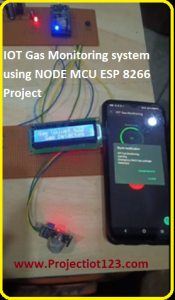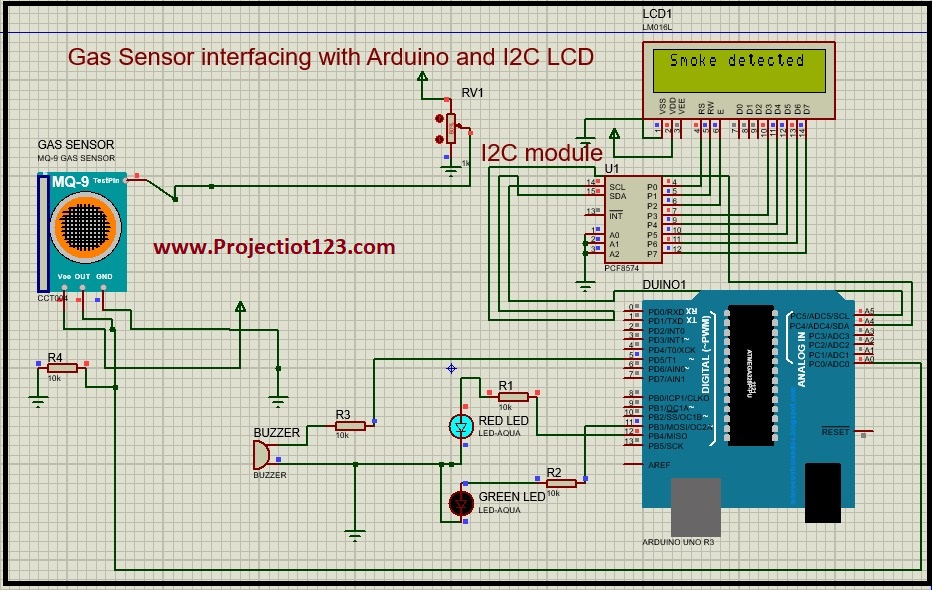IOT Gas Monitoring system using NODE MCU ESP 8266 Project

IOT Gas Monitoring system using NODE MCU ESP 8266 Project
In this article, we will learn how to make IOT Gas Monitoring system using NODE MCU ESP 8266 Project.
In the last post, we learned how to make Obstacle Detection shoes for blind person Project.
Components Require:
- NODE MCU ESP8266 board
- Gas sensor
- LCD display
- Power supply (12v to 5v)
- Internet connection (Wi-Fi)
- Buzzer (12v)
- Regulator (7805)
- I2C module
- Transistor (C945)
- Connecting wires
IOT Gas Monitoring system using mobile app.

NODE MCU ESP8266 board:
The NODE MCU ESP8266 board is a compact, programmable microcontroller board based on the ESP8266 Wi-Fi module. It’s commonly used in IoT (Internet of Things) projects due to its small size, low cost, and built-in Wi-Fi capability. This board can be programmed using various programming environments like the Arduino IDE or through languages like Lua using the Node MCU firmware. It’s well-suited for projects that require wireless connectivity and can be used for tasks such as sensing, controlling devices remotely, and transmitting data over the internet.
Gas sensor:
A gas sensor is a device designed to detect the presence and measure the concentration of specific gases in the environment. These sensors work based on different principles, such as detecting changes in electrical conductivity, changes in resistance, or changes in light absorption when exposed to certain gases.

There are various types of gas sensors available, some common types are write down.
- MQ series sensors:
These are widely used gas sensors like the MQ-2, MQ-5, etc., which can detect gases such as methane, carbon monoxide, alcohol, and more.
- Carbon Monoxide (CO) sensors:
Specifically designed to detect carbon monoxide gas, often used in places where combustion might occur.
- Methane (CH4) sensors:
This sensor is designed to detect methane gas, commonly used in gas leak detection systems.
- Hydrogen (H2) sensors:
This sensor is used to detect the presence of hydrogen gas, often utilized in industrial settings.
Gas sensors are critical in various applications, including industrial safety, environmental monitoring, gas leak detection, and air quality monitoring.
LCD display with I2C module:
An LCD display with an I2C (Inter-Integrated Circuit) module refers to a liquid crystal display (LCD) screen that’s equipped with an I2C interface for communication. This module simplifies the process of connecting an LCD to a microcontroller by using the I2C protocol, reducing the number of pins required for communication.
